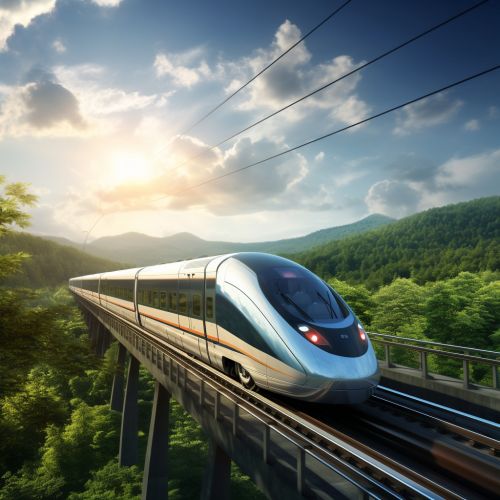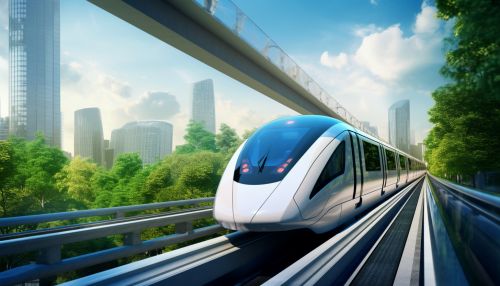Maglev Train
Introduction
A Maglev train is a system of train transportation that employs magnetic levitation to move vehicles without touching the ground. With magnetic levitation, the train travels along a guideway using magnets to create both lift and propulsion, thereby reducing friction and allowing for higher speeds.


History
The concept of magnetic levitation for use in transportation dates back to the early 20th century. The first patent for a complete maglev system was awarded to German inventor Hermann Kemper in 1934. However, due to the technological limitations of the time, it was not until the late 1960s that the first commercial maglev transport systems became a reality.
Technology
Maglev trains function using a sophisticated system of magnets and electromagnetic fields. The basic principle involves the use of magnetic forces of attraction and repulsion to levitate the train above the guideway and propel it forward.
Levitation
The levitation of the train is achieved through the use of electromagnetic forces between the guideway and the train. In most maglev systems, the bottom of the train wraps around the guideway. Electromagnets attached to the train's undercarriage are directed up towards the guideway, which levitates the train above the track.
Propulsion
The propulsion of a maglev train is achieved through the use of a linear motor. Unlike a traditional motor, a linear motor produces motion in a straight line rather than rotational motion. In a maglev train, the linear motor is divided along the guideway, which means that the train doesn't have to carry a power source on board.
Guidance
The guidance of a maglev train is controlled by the guideway. The magnets in the guideway are designed to pull the train in the forward direction and keep it centered.
Advantages and Disadvantages
Maglev trains offer several advantages over traditional rail systems. They are capable of very high speeds with some trains reaching up to 500 km/h. They are also quieter and smoother than conventional trains, and have lower maintenance costs because there is no physical contact between the train and the track.
However, maglev trains also have some disadvantages. The infrastructure costs for maglev systems are high. They are not compatible with existing rail infrastructure, meaning that new maglev lines must be built. Furthermore, the power consumption of maglev trains is higher than that of conventional trains.
Examples of Maglev Trains
Several countries have implemented maglev technology in their transportation systems. The Shanghai Maglev Train, which became operational in 2004, is currently the fastest commercial maglev train in the world, reaching speeds of 431 km/h. Japan's SCMaglev has achieved even higher speeds in test runs, reaching a record 603 km/h in 2015.
Future Developments
The future of maglev technology looks promising, with several countries planning to implement new maglev lines. In Japan, construction is underway for a new maglev line between Tokyo and Nagoya, set to be operational by 2027. In the United States, plans are being considered for a maglev line between Washington D.C. and Baltimore.
